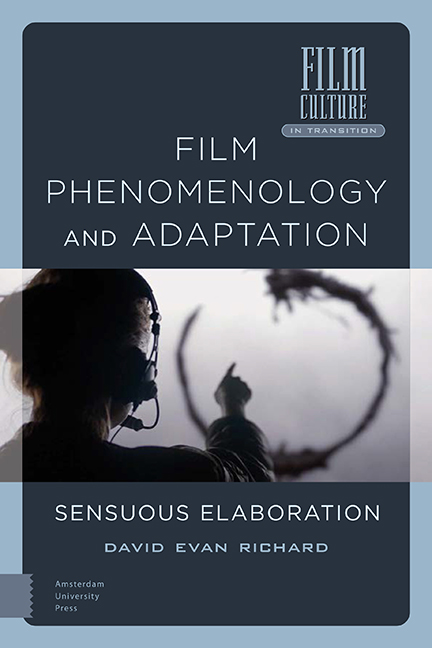Book contents
- Frontmatter
- Contents
- Acknowledgements
- List of Figures
- Introduction: A ‘Fleshly Dialogue’
- 1 Grave Visions: Visual Experience and Adaptation
- 2 Resonance and Reverberation: Sounding Out Screen Adaptation
- 3 Textural Analysis: Touching Adaptation
- 4 Textures of Imagination
- 5 (Re-)Mediating Memory’s Materiality
- Conclusion: Body Language
- Bibliography
- Filmography
- Index
3 - Textural Analysis: Touching Adaptation
Published online by Cambridge University Press: 27 May 2021
- Frontmatter
- Contents
- Acknowledgements
- List of Figures
- Introduction: A ‘Fleshly Dialogue’
- 1 Grave Visions: Visual Experience and Adaptation
- 2 Resonance and Reverberation: Sounding Out Screen Adaptation
- 3 Textural Analysis: Touching Adaptation
- 4 Textures of Imagination
- 5 (Re-)Mediating Memory’s Materiality
- Conclusion: Body Language
- Bibliography
- Filmography
- Index
Summary
Abstract
While the previous chapters have explored the materiality of adaptation and perception, this chapter explicitly examines how screen adaptations appeal to the spectator's tactile sensitivity. This chapter draws on film-phenomenological approaches—such as Vivian Sobchack, Laura Marks, and Jennifer Barker—that characterize vision as being haptic and synaesthetic. Drawing on an analysis of Jane Campion's film In the Cut (2002), I argue that the adaptation translates the novel's protagonists tactile experience of her world and language into a haptic experience, in what I term the spectator's ‘tactile orientation’. In doing so, this chapter further explores how not how adaptation should be considered as a textual layering of material, but also a textural layering that includes the spectator's body in a moment of entanglement.
Keywords: adaptation, phenomenology, touch, embodiment, tactile cinema, In the Cut (Jane Campion, 2002)
Introduction: Scratching the Surface
Film Phenomenology and Adaptation: Sensuous Elaboration builds on the important work of Linda Hutcheon and Christine Geraghty who both define adaptation as a process of textual layering. As outlined in the introduction, Hutcheon claims that adaptations are ‘multilaminated’ palimpsests and that ‘we always feel its presence shadowing the one we are experiencing directly’. Building on Hutcheon's work, Geraghty describes adaptation ‘in terms of layering and transparencies’, allowing the critic to attend to different ‘layers of different thickness and significance […] a thin, gauzy layer allows for much to be seen through it, while a more opaque sheet attempts to substitute its own presence for the layers that lie behind’. This chapter extends the work of these critics and argues that not only do novel and film come into contact in a mosaic of layers, but the spectator's body also forms another layer in the ‘multilaminated’ palimpsest. In doing so, I suggest that as the adaptation's source material becomes kinetically brought to life on the screen, the spectator not so much ‘sees’ through the textual layers, but rather becomes entangled within a textural layering. Not content to merely peel back and reveal the textual layers that comprise an adaptation, this chapter rather argues that the cinema offers a tactile experience that can solicit the skin, beckon the muscles, and otherwise plunge the spectator into the textural density of the story world.
- Type
- Chapter
- Information
- Film Phenomenology and AdaptationSensuous Elaboration, pp. 101 - 128Publisher: Amsterdam University PressPrint publication year: 2021



